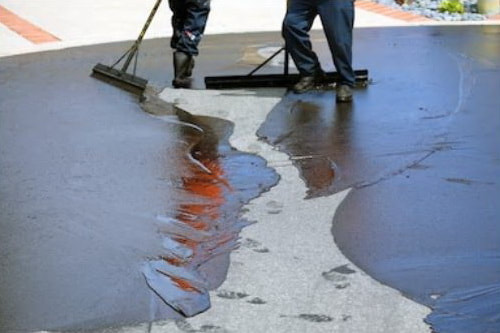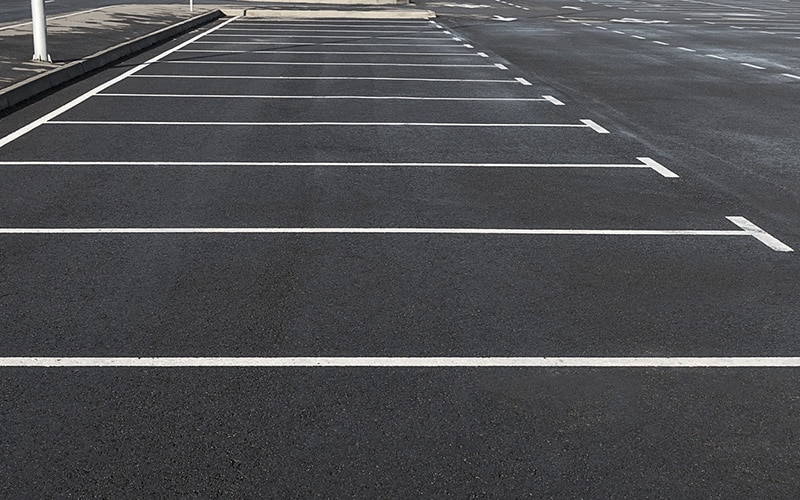Change Your Home's Aesthetic appeals: Commercial Parking Lot Leading and Asphalt Sealing Solutions
Change Your Home's Aesthetic appeals: Commercial Parking Lot Leading and Asphalt Sealing Solutions
Blog Article
Warm Mix Asphalt: A Lasting Solution for Sidewalk
Warm Mix Asphalt (HMA) has become a leading sustainable choice for sidewalk remedies, providing a myriad of environmental benefits and ingenious technologies. Its capability to recycle products and lower energy consumption offers an engaging situation for its adoption in road construction tasks. In addition, the lasting efficiency and longevity of HMA make it a recommended choice for infrastructure development. As the demand for eco-friendly building and construction methods grows, discovering the subtleties of HMA's sustainability can offer beneficial understandings into the future of sidewalk services.
Environmental Advantages of Hot Mix Asphalt

Furthermore, Hot Mix Asphalt helps to mitigate metropolitan warm island impacts. Its dark shade absorbs sunshine, decreasing the amount of warm showed back right into the environment compared to lighter-colored pavements. This can reduce ambient temperature levels in metropolitan locations, reducing the demand for cooling and inevitably decreasing energy consumption.
On top of that, Hot Mix Asphalt adds to enhanced stormwater administration. Its permeable nature allows water to penetrate the sidewalk and charge groundwater supplies, decreasing overflow and the danger of flooding. These environmental advantages make Warm Mix Asphalt a lasting selection for paving roads and freeways.
Power Effectiveness in HMA Production
Is power efficiency an essential element in the production of Warm Mix Asphalt (HMA)? Power plays a significant duty in the production of HMA, influencing both cost and ecological sustainability. One vital facet of energy efficiency in HMA production is the usage of warm mix asphalt (WMA) technologies.
Moreover, innovations in plant modern technologies have actually led to even more energy-efficient HMA production processes. By enhancing power use in HMA manufacturing, the market can reduce its carbon footprint while keeping high-grade pavement products.
Recyclability of Warm Mix Asphalt
The recyclability of Hot Mix Asphalt (HMA) is an essential facet of its sustainability and long-term ecological effect. HMA is one of the most recycled products in the United States, with over 100 million bunches of redeemed asphalt pavement (RAP) being reused every year in new sidewalk construction. Recycling HMA supplies numerous ecological benefits, such as lowering the need for virgin products, reducing power consumption during production, and reducing the quantity of waste sent out to garbage dumps.
The process of recycling HMA involves milling the existing pavement, crushing it right into smaller sized items, and mixing it with new aggregate and asphalt binder to produce a recycled mix. This recycled mix can often carry out in addition to or even much better than traditional HMA, while needing less raw products and creating lower greenhouse gas discharges. By integrating RAP into new sidewalk read this post here tasks, roadway firms can preserve all-natural sources, minimize prices, and minimize the environmental footprint of road building and construction and upkeep activities. Generally, the recyclability of HMA plays a substantial duty in advertising sustainable techniques within the pavement market.

Long-Term Efficiency of HMA
Asphalt pavements show sturdiness and resilience over a prolonged period, showing the long-term performance of Warm Mix Asphalt (HMA) Additionally, innovations in HMA innovation, such as the usage of polymer-modified binders and warm mix asphalt, have better enhanced the toughness and longevity of HMA pavements. By focusing on quality building and upkeep practices, HMA proceeds to confirm itself as a cost-effective and sustainable remedy for long-lasting pavement facilities.

HMA: Sturdiness and Sustainability
Demonstrating both durability and sustainability, Warm Mix Asphalt (HMA) has become a keystone in the construction of durable pavement frameworks - regrading. HMA's resilience originates from its capability to withstand hefty loads, rough weather, and high traffic quantities, making it a trusted selection for roads, highways, and airport terminal runways. The make-up of HMA, which typically consists of accumulations, binder, and filler, plays a vital role in boosting its longevity and resistance to put on and tear
In addition, HMA's sustainability hinges on its recyclability and energy-efficient manufacturing process. The capability to recycle recovered asphalt sidewalk (RAP) in new HMA mixes lowers the demand for virgin products and minimizes the environmental effect of sidewalk construction and maintenance. In addition, the energy effectiveness of generating HMA depends on its lower blending temperatures contrasted to various other sidewalk products, resulting in reduced power intake and greenhouse gas emissions.
Conclusion
In final thought, hot mix asphalt (HMA) provides a sustainable option for sidewalk with its eco-friendly features. HMA's recyclability, power performance in manufacturing, and lasting durability make it an environmentally friendly option for roadway building and construction. By preserving all-natural sources, minimizing waste, and decreasing greenhouse gas exhausts, HMA plays a crucial role in promoting sustainability in infrastructure development. Its ability to reduce metropolitan warm island impacts additionally emphasizes its relevance in creating eco aware and resistant pavement systems.
HMA is one of the most recycled products in the United States, with click to find out more over 100 million heaps of recovered asphalt pavement (RAP) being reused each year in great site brand-new pavement building and construction.The process of reusing HMA includes milling the existing sidewalk, crushing it right into smaller items, and mixing it with brand-new accumulation and asphalt binder to create a recycled mix.Asphalt sidewalks show resilience and strength over a prolonged period, showing the long-term efficiency of Warm Mix Asphalt (HMA) Furthermore, advancements in HMA modern technology, such as the use of polymer-modified binders and cozy mix asphalt, have better improved the longevity and long life of HMA pavements. The capacity to reuse redeemed asphalt pavement (RAP) in brand-new HMA mixtures lowers the demand for virgin materials and decreases the environmental impact of pavement building and upkeep.
Report this page